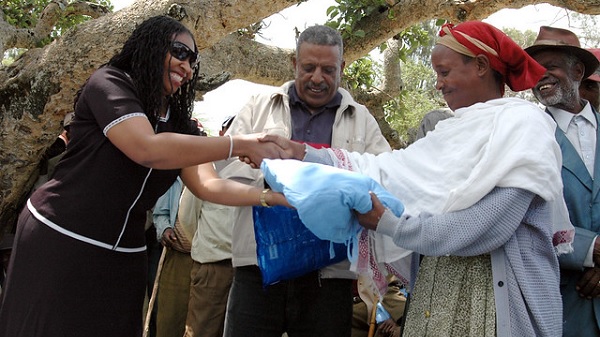
An initiative called ENACTS has made climate information easier for Ethiopian health professionals to access and use. This has helped them to pinpoint which districts will be most exposed to the climatic conditions that foster the spread of malaria – and to better target malaria control measures.
(CDKN)–Ethiopia has a varied landscape, which gives rise to a diverse climate. Its central plateau ranges from 1,290 to 3,000 meters high and covers two-thirds of the country’s land area. By contrast, hot, humid lowlands cover part of western Ethiopia and the southeast of the country is characterized by hot, dry plains. As a result of this topography, one can travel rapidly from one climate extreme to another in a short distance[1].
Malaria is a scourge across 75% of the country. More than 50 million people are at risk of malaria and this life-threatening disease affects four to five million people in Ethiopia every year.
Malaria is not a year-round phenomenon in Ethiopia, however. There are two rainy seasons per year; malaria transmission follows each rainy season and continues for a month or more after it ends, as long as temperatures are suitable.
Temperature influences the development rate and survival of malaria parasites and of the mosquitoes that spread malaria while rainfall helps create mosquito breeding sites and increases humidity (which in turn supports survival of adult mosquitoes).[2]
Climate variability has been shown to have a critical role in the occurrence of malaria outbreaks in Ethiopia’s highlands. Higher-than-normal rates of malaria in Ethiopia have been associated with higher temperatures in the current and preceding season, often associated with El Nino.[3] Evidence suggests that warming temperatures are putting new human populations at risk of the disease, at higher altitudes.[4]
Making climate information available at district level
Enhancing National Climate Services (ENACTS)[5] is an initiative to “create a user-focused climate service that targets national and subnational decision-makers.”[6] ENACTS is undertaken by National Meteorological and Hydrological Services and Regional Climate Centers in Africa with the support of the International Research Institute for Climate and Society and other partners.
ENACTS’ flagship activity is the creation of online ‘maprooms’, which present weather and climate information in user-friendly ways (see here).
ENACTS is a multi-donor initiative, whose work has been funded in Ethiopia by the Google Foundation[7], USAID’s President’s Malaria Initiative, the US National Institute for Health, the UK’s Department for International Development (DFID) and others. Since 2016, the Weather and Climate Information Services for Africa (WISER) program – supported by DFID – has provided complementary funding, to foster ENACTS implementation in Ethiopia and other African countries.
In Ethiopia, the ENACTS team has made meteorological information more relevant and accessible to a wide range of decision-makers at district level; and has also targeted information specifically to health professionals.
The ENACTS data for Ethiopia provides more than 34 years of rainfall data and more than 50 years of temperature data. It combines both ground station, elevation, satellite and re-analysis data.[8]
The ENACTS team used the data to produce district-level ‘climate guides’, with eight prepared during the period of WISER support.[9] For the district or ‘woreda’ level in Ethiopia, the guides provide:
- Climate and agro-climatic guidance;
- Information about when the ‘Kiremt’ main rainy season from June to September starts and stops. This not only helps farmers to know when to plant and harvest crops and move livestock; the information is also of critical importance to the health sector.
Read the complete story at Climate & Development Knowledge Network
